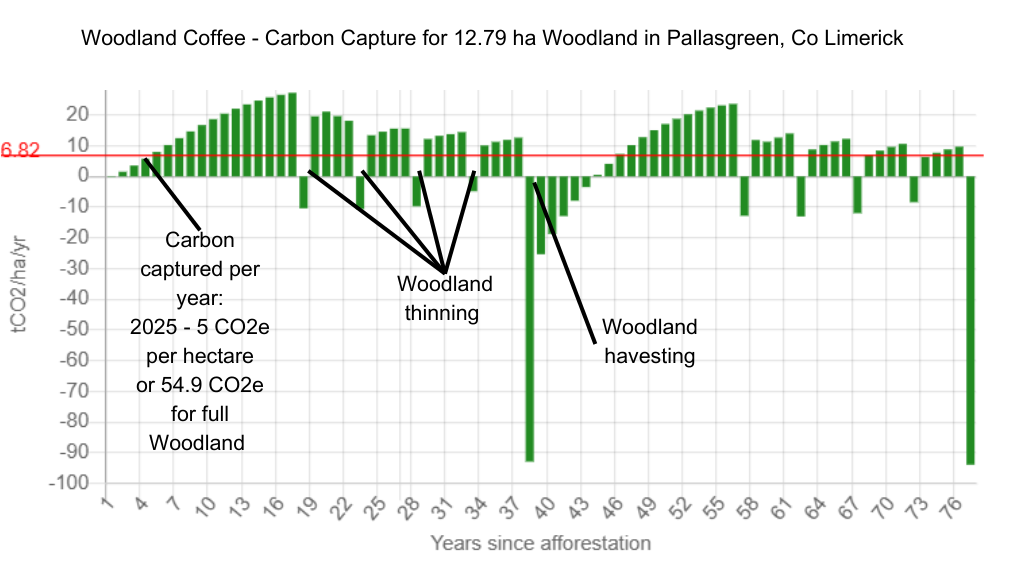Trees offer numerous benefits to the environment. They play a vital role in providing refuge for wildlife and protecting against flooding and soil erosion.
The data presented in the table above refers to our 12.79-hectare woodland in Pallasgreen, Co. Limerick, and is based on a model developed by Teagasc, which tracks the net carbon exchange of the woodland. Trees sequester—or capture—carbon primarily in their trunks, branches, roots, and surrounding soil. Through photosynthesis, trees absorb carbon dioxide from the atmosphere to produce sugars for growth. However, they also release some carbon back into the atmosphere through natural decomposition. Carbon—and other gases—move through forests in a continuous cycle of capture and release. The term carbon exchange refers to the net amount of carbon sequestered during this process.
Of the 12.79 hectares, 10.98 hectares have been planted with trees, while the remaining 2.15 hectares have been left to rewild. This rewilded area provides a haven for insects, birds, and animals, promoting biodiversity.
The graph above shows how carbon is expected to be sequestered over a 40-year lifecycle. Peak sequestration is projected at 26 tonnes of carbon per hectare in year 17 of growth, which, in our case, will be in 2038. By 2025, we expect to sequester approximately 5 tonnes of carbon per hectare—equivalent to just under 55 tonnes for the year.
Interestingly, the model predicts negative carbon figures in years 18, 23, 29, and 33. These dips occur during planned thinning—an essential woodland management practice that removes smaller trees and lower branches to improve overall forest health and optimise long-term carbon capture.
The Teagasc model also assumes the entire woodland will be harvested after 40 years, releasing around 92 tonnes of carbon per hectare. However, this does not reflect our intention—we do not plan to clear the woodland.
There is no silver bullet when it comes to removing carbon from the atmosphere. However, trees remain one of the most effective and reliable solutions we have. In addition to their carbon capture potential, they also play a crucial role in enhancing biodiversity and creating more resilient ecosystems.
Our thanks go to you, who choose Woodland Coffee. Choosing Woodland coffee is a small choice today that delivers a lasting legacy for generations to come! Lets continue making a difference together.
